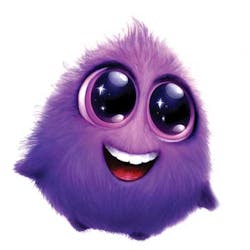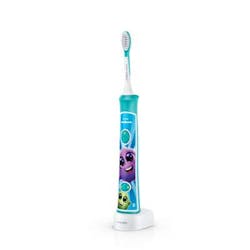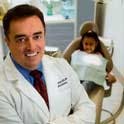Oral health care for kids: Tips to promote good habits with good tools, even before the first tooth pops up
After more than two decades of working with pediatric patients and their parents, Dr. Ramos-Gomez has extensive experience in the field. Here, he shares his tips and tricks for promoting proper oral health-care habits and the right tools—including the latest from Philips—even before the first tooth pops up.
Working with children and educating parents
As a pediatric dentist for more than 25 years, I have worked with countless patients and parents alike who are simply not aware or thrilled with the idea of brushing their child’s teeth. My expertise is working on prevention and intervention of early childhood cavities in children under the age of five.
ADDITIONAL READING |Behavior management considerations in the pediatric dental patient
All dentists should also work with parents to pinpoint proper strategy based on the age and development of their child. For example, while the dentist-recommended brushing time is two minutes, twice daily with fluoride toothpaste, children must work up to that.
While they certainly want what is best for their children’s health, a majority of parents are not experts in the dentistry field. Because brushing your own teeth is quite a different process than brushing a child’s, it’s up to the dental practice to teach the proper technique and timeline. Parents should begin cleaning before or as soon as they notice the first tooth, typically around six- to 12-months-old. Brushing might be too harsh at this age, so we recommend beginning first with a wet gauze for a softer clean. Children can start using a small amount of toothpaste before age three and as soon as the first tooth appears in the mouth.
We follow the evidence-based policy of universal recommendations by the American Academy of Pediatrics (AAP), American Academy of Pediatric Dentistry (AAPD), and American Dental Association (ADA) for the appropriate use of fluoridated toothpaste as soon as the first tooth is in the mouth. Use just a smear amount before age three and a pea-sized amount after age three.
ADDITIONAL READING | Placing effective restorations in challenging situations with pediatric dental patients
Because the majority of our patients are under five years of age, the parents are doing the brushing for them. In fact, parents should be responsible for brushing their children’s teeth until approximately age eight. My dental team shares a clever—and useful—piece of advice with parents who are unsure whether their children are ready to start brushing on their own. The ability to brush teeth is part of developed motor skills. When your children are able to tie their shoes, they should be able to brush their teeth properly (and vice versa).
Oral health care as a bonding experience
Demonstrate proper brushing techniques to both the child and parent together during the appointment, as parents are doing the actual brushing. In addition to asking parents to watch my demonstration of a proper mouth cleaning, I ask them to then take over and show me what they learned. This is a great learning experience for both child and parent that allows us to make sure they understand the advice my team just gave them. Further, it keeps everyone engaged and focused during their visit. One challenge is that while children are not excited about the idea of brushing their teeth regularly, parents are frustrated with trying to convince them to learn proper brushing techniques or even simply sit still while they brush for them. We demonstrate different options and positions for brushing their child’s teeth that might be useful to them individually.
The biggest challenge in promoting good oral health and hygiene is getting both children and parents excited about something they see as such a dull activity. My advice is always to make the process as fun and creative as possible. Parents can read stories, watch videos, or sing songs to keep their children entertained while they brush. I am a big proponent of any supplementary activity that helps shape toothbrushing as a bonding experience between parent and child. It’s an important learning process, so let’s give it an emotional tie rather than make it feel like a boring, tedious task. Our goal is to get parents and children equally excited about brushing so that the sentiment can build a strong foundation for good oral hygiene within families.
Go beyond the teethAnd don’t forget the parents. Because parents are the role models of good oral hygiene outside of the dentist’s office, children want to imitate their parents and use the same tools. Many of our patients’ parents also use power toothbrushes, specifically Philips Sonicare brushes. Philips’ new power toothbrush for kids is the natural sequential innovation for children who want to have a gadget like mom’s and dad’s.
I also offer various tips and products around a full oral-health-care routine that will prevent future cavities. Once children are old enough to start brushing with fluoride toothpaste on their own twice daily, there are additional products you can recommend as great combination therapy approach tools. One such product is Philips Sonicare TongueCare+, which helps attack “sugar bugs” that stick to the tongue. No matter what product you choose, it’s very important to make sure both the children and their parents are paying attention to the full oral-health-care routine from the very beginning. Remember that oral health is an essential part of total health.








